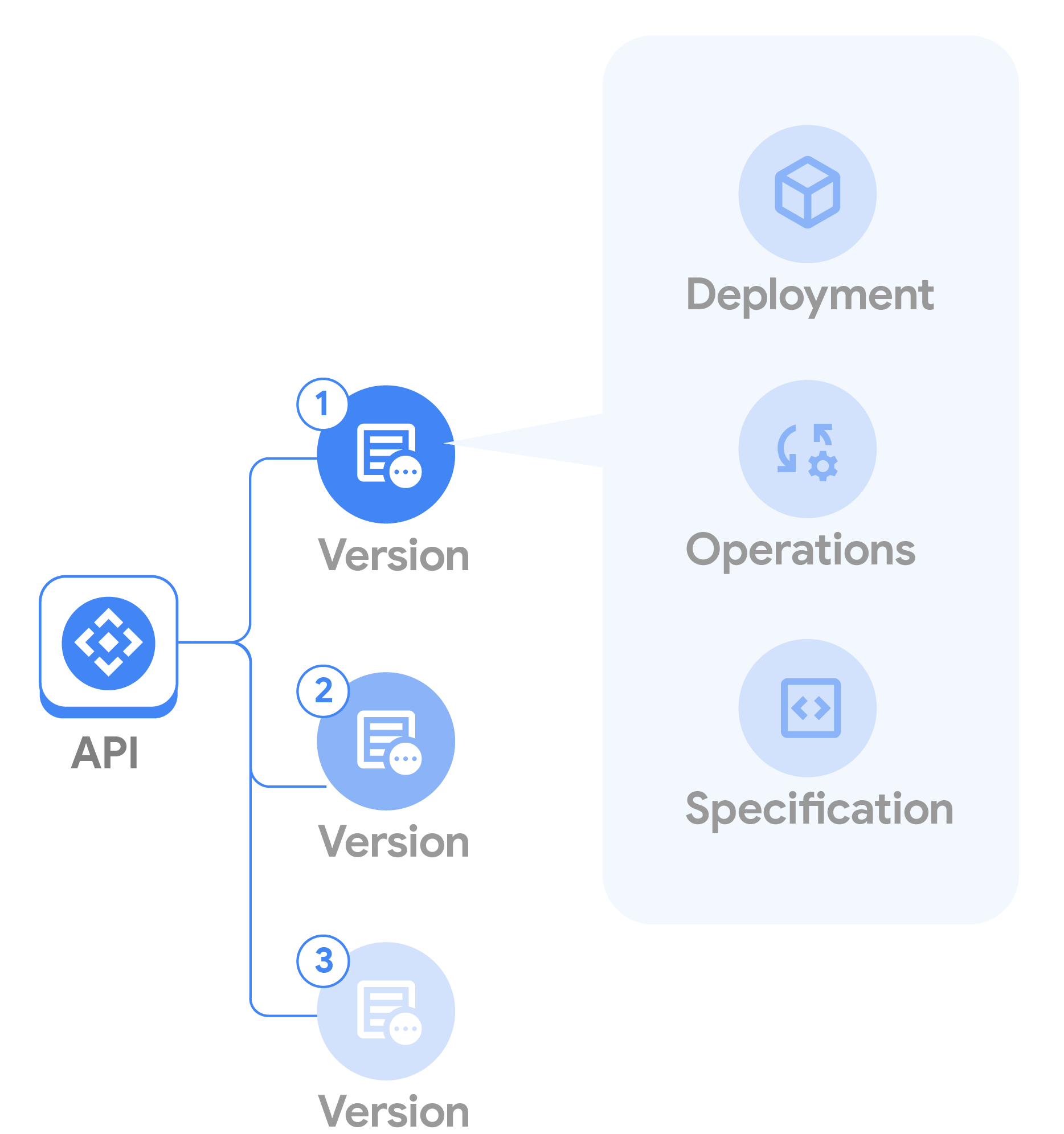This page applies to Apigee and Apigee hybrid.
When you register an API with API hub, you create and store an entity that represents the API. We call this entity an API resource. API resources stored in API hub are searchable and provide detailed operational and descriptive information about the API.
An API resource is a complex entity that can have one or more versions associated with it. You can think of a version as the state of an API at a point in time. Each version can have its own set of entities such as operations parsed from an API specification, deployments, and API specifications, as shown in Figure 1.

Figure 1. An API can have multiple versions.
Either at the time you register an API or afterwards, you can add and edit API resource attributes to build a rich description of the API. See Manage attributes.
API hub supports both system-defined and user-defined attributes. Examples of system defined attributes include:
- API style: An attribute with default values of REST, gRPC, SOAP, and Async API.
- Target users: The intended users (consumers) of an API
- Team: The producing team or teams responsible for an API
- Business unit: The business unit responsible for an API
- Maturity level: An indication of the API's lifecycle stage
Finally, an API resource can have user-defined attributes, which you define in Settings based on your organizational or team needs.
